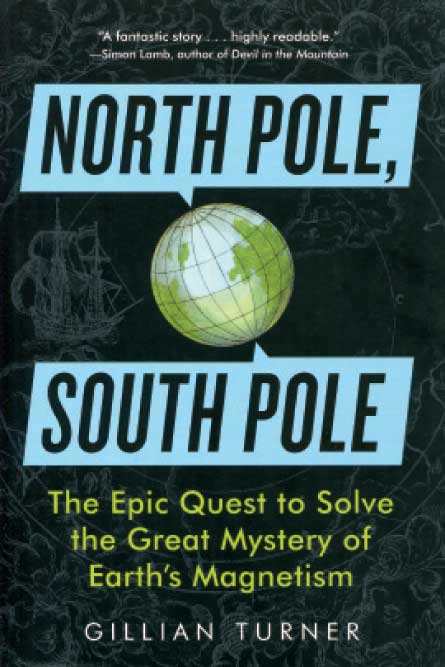Book Review: North Pole, South Pole: The Epic Quest to Solve the Great Mystery of Earth’s Magnetism by Gillian Turner
Review by Sid Perkins
Many creatures — birds, bees and butterflies, for example — use the planet’s magnetic field to navigate, but humans are the only ones to do so with instruments rather than an innate sense. In her first book, Turner, a geophysicist, looks at how people came to invent the compass and what has been learned since about the magnetic field that drives it.

Chapter by chapter, the author walks readers through the history of studying Earth’s magnetic field, from the ancient Greeks’ fascination with natural magnets called lodestones to today’s supercomputer simulations of field-generating processes in the planet’s core.
The first known compasses were used in China by practitioners of feng shui to auspiciously orient homes, villages, fields and tombs, Turner notes. Only much later were the instruments used by European explorers to help them conquer the seas and expand empires.
As early as the 14th century, European navigators noticed that at many locations the compass didn’t point due north. Three centuries later others detected signs that the direction of Earth’s magnetic field had changed. Then in the 20th century, researchers came to realize that the field had actually reversed itself many times over the course of Earth’s history — which, in turn, led to discoveries that bolstered then-controversial theories of seafloor spreading and continental drift.
By deftly combining threads from science and history, Turner weaves a fascinating geophysical tale that spans several millennia.
The Experiment, 2011, 272 p., $15.95.